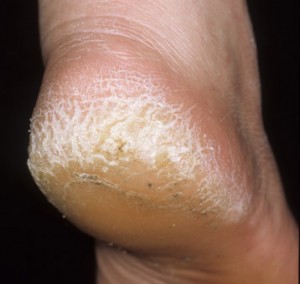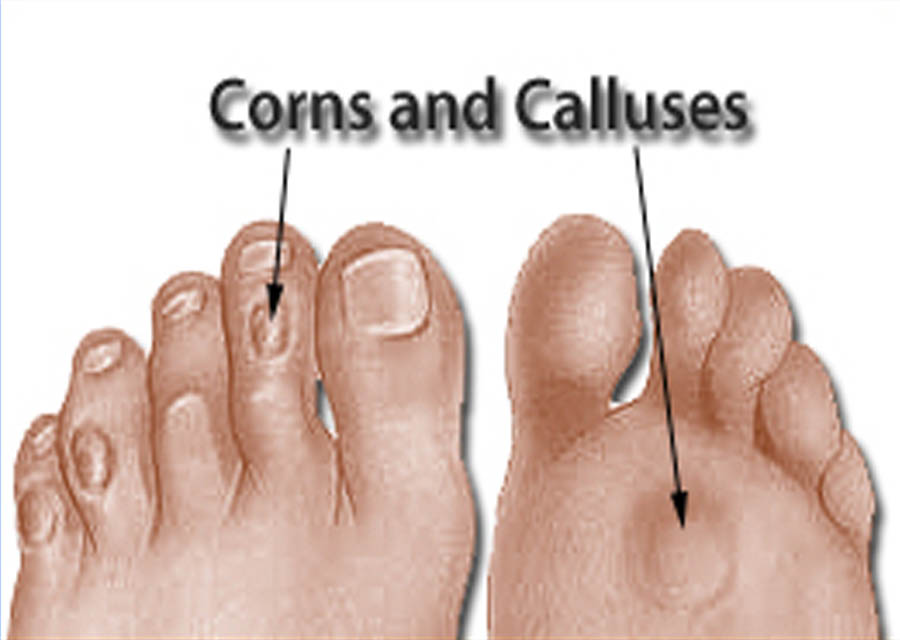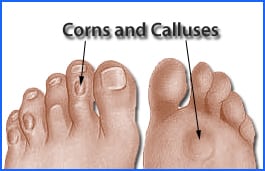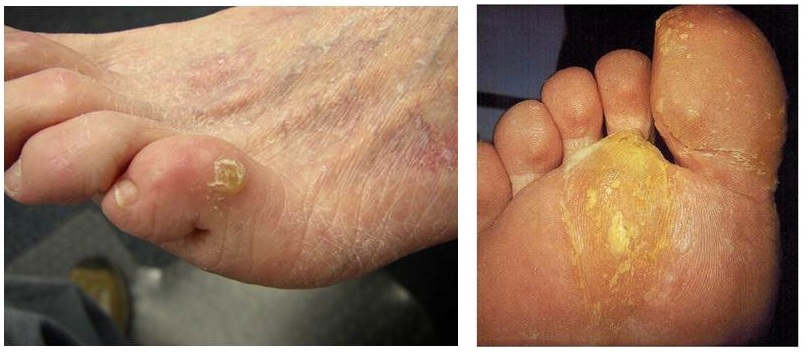It’s really not my intention to be corny or callous here, but it’s almost in the name. This Straight, No Chaser looks at two very common problems of the feet.
First things first: even though “you know it when you see it,” let’s be clear what we’re describing, because although both corns and calluses can result from pressure and/or friction such as that occurring from tight-fitting shoes, loosely fitting high-heeled shoes or not wearing socks. However, there are differences between the two.

- Corns are painful, smaller lesions that typically have a hard center with inflamed skin surrounding it. The presence of this inflamed skin suggests corns will hurt when pressure is applied. Corns usually aren’t seen on weight-bearing parts of the foot (although they can be), so if this is happening on the sides or toe of your toes, it is likely a corn.

- Calluses are typically larger and usually painless lesions, although they can have a range of sizes. They usually develop on the soles of your feet, especially under the heels or balls, on your palms, or on your knees. Calluses vary in size and shape and are often larger than corns.
In short, if your feet have any type of raised, hard lesion, any thickened, dry or scaly skin, or area of tenderness or pain with or without these symptoms should be a cause for concern.
Perhaps the most important considerations for you are to know what you can do to address these conditions yourself and when to see your physician.
Here are some self-help efforts you may attempt at home to prevent and address those corns and calluses. If you’re diabetic, you shouldn’t be attempting to treat these conditions on your own because of the increased incidence of infection and risks of amputation.
- Moisturize. Keeping your skin soft prevents much of the friction that can be at the root of corn and callus formation. Moisturizing also facilitates removal of thickened skin. This can involve soaking as well as using lotions.
- Avoid tight shoes and wear comfortable socks. This will help you prevent and address corn or callus issues. Here’s a simple tip: your shoes are too tight if you can’t wiggle your toes.
- Use pads. Simple over-the-counter pads can cushion the impact between shoes and your skin.
- Thin affected areas. After bathing or other moisturizing efforts, tough skin can be removed with objects such as an emery board, nail file or pumice stone.

Here are some cues that your corn or callus needs to be addressed.
- If you have diabetes, vascular disease or have been otherwise told that you have poor blood flow
- If your pain is beyond your ability to control it on your own
Medical treatment for corns and calluses will involve optimizing the preventive mentioned previously, use of shoe inserts and consideration of medicinal and surgical options. The medical and surgical options aren’t necessarily first-line thoughts, but they are more likely to be considered if additional foot issues exist. As is often the case, your best option is prevention.
Thanks for liking and following Straight, No Chaser! This public service provides a sample of 844-SMA-TALK and http://www.SterlingMedicalAdvice.com (SMA). Enjoy some of our favorite posts and frequently asked questions as well as a daily note explaining the benefits of SMA membership. Please share our page with your Friends on WordPress, on Facebook at SterlingMedicalAdvice.com and on Twitter at @asksterlingmd.
Copyright © 2015 · Sterling Initiatives, LLC · Powered by WordPress


